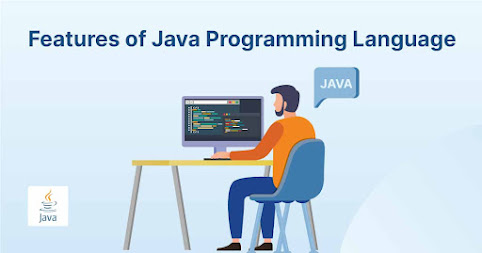Java’s Powerful Features: A Comprehensive Guide Java’s Powerful Features: A Comprehensive Guide
Introduction:
Java, a widely used and versatile programming language, offers a plethora of powerful features that enable developers to build robust, scalable, and high-performance applications. Whether you're a beginner learning Java or an experienced developer looking to enhance your skills, understanding and harnessing Java's powerful features is essential. In this comprehensive guide, we will explore some of Java's most noteworthy features and provide insights on how to leverage them effectively in your projects.
1. Object-Oriented Programming (OOP):
Object-Oriented Programming (OOP) is a fundamental concept in Java programming. It provides a powerful approach to designing and structuring code by organizing data and behaviour into objects. Java is renowned for its robust support of OOP principles, making it an ideal language for building modular and maintainable applications. In Java, objects are instances of classes that encapsulate data and methods. The class serves as a blueprint or template for creating objects and defining their attributes (variables) and behaviours (methods). Through the concept of inheritance, classes can inherit properties and behaviours from other classes, promoting code reuse and extensibility.Java's "write once, run anywhere" philosophy makes it platform-independent. Explore the Java Virtual Machine (JVM) and understand how it enables Java programs to run on any platform that supports the JVM. Learn how to develop platform-independent applications that can be deployed on various operating systems with Best Java Training in Meerut.
2. Platform Independence:
One of the significant advantages of Java is its platform independence. Java was designed to be a "write once, run anywhere" language, meaning that Java programs can be developed on one platform and executed on any platform that supports the Java Virtual Machine (JVM).
Platform independence in Java is achieved through the use of the JVM, which acts as an abstraction layer between the Java code and the underlying operating system. When a Java program is compiled, it is transformed into bytecode, a platform-independent representation of the code. This bytecode can then be executed on any system with a compatible JVM, regardless of the underlying hardware or operating system.
3. Exception Handling:
Java's robust exception-handling mechanism allows developers to gracefully handle and recover from runtime errors. Dive into the world of try-catch blocks, checked and unchecked exceptions, and exception hierarchies. Discover best practices for handling exceptions effectively and ensuring the stability of your applications.
4. Collections Framework:
Java's Collections Framework provides a rich set of classes and interfaces for storing, managing, and manipulating groups of objects. Explore the various collection types, such as lists, sets, and maps, and understand when to use each one.
5. Multithreading and Concurrency:
Java's support for multithreading and concurrency allows developers to take advantage of modern hardware architectures and build highly scalable applications. Delve into the intricacies of creating and managing threads, synchronization mechanisms, and concurrent data structures.
6. Java Generics:
Generics provide a type-safe way to work with collections and define reusable algorithms. Uncover the power of Java generics and learn how to write generic classes, methods, and interfaces. Understand how generics improve code readability, maintainability, and type safety while reducing the need for casting and enhancing compile-time checks.
7. Java I/O and Networking:
Java provides a comprehensive set of I/O (Input/Output) and networking APIs that allow developers to handle various aspects of file operations, reading/writing streams, and creating networked applications. The Java I/O and Networking features provide a robust foundation for building applications that interact with the file system, communicate over networks, and exchange data.
Java's I/O API includes classes and interfaces for performing operations such as reading and writing files, working with directories, and manipulating streams. The java.io package provides classes like FileInputStream and FileOutputStream for reading and writing raw bytes, FileReader and FileWriter for working with character streams, and BufferedReader and BufferedWriter for efficient buffered I/O.
8. Java Annotations:
Annotations provide a powerful way to add metadata and configure behaviour in Java applications. Learn how to create and use annotations effectively to improve code organization, enable compile-time checks, and simplify configuration tasks. Discover built-in annotations like @Override, @Deprecated, and @SuppressWarnings, as well as how to create custom annotations.
Conclusion:
Java's powerful features empower developers to build robust, scalable, and efficient applications. By mastering the core concepts of object-oriented programming, platform independence, exception handling, collections, multithreading, generics, I/O, networking, and annotations, you can unleash the full potential of Java. Continuously explore and experiment with these features, and leverage them to write cleaner, more maintainable code. As you become more proficient in Java, your ability to create innovative and high-quality software will flourish.

ReplyDeleteI appreciate the valuable information provided; it's hopefully beneficial for others interested in the topic. While searching for relevant and accurate content, I found it here and in other sources, proving very useful. Another noteworthy subject worth exploring is Full Stack development. Get to know about Full Stack Development